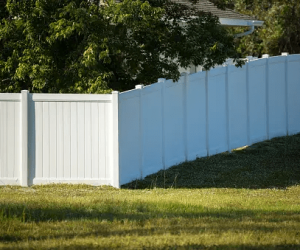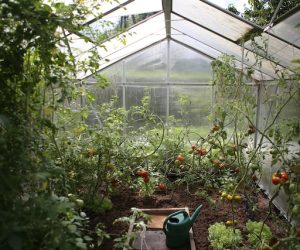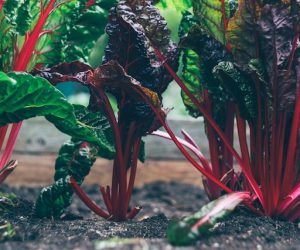The radish is a cool climate vegetable that will give you many crops in a short time – we’re talking about a fast-growing vegetable here! They are very easy to grow and even easier to harvest, so if you doubt whether or not to grow them in your garden, don’t hesitate.
If this didn’t convince you to start growing it, then we have another thing to say – the radish is a great companion plant that will chase away many pests from other plants nearby! Who doesn’t want a garden free of annoying pests and diseases?
1. Choose a Variety
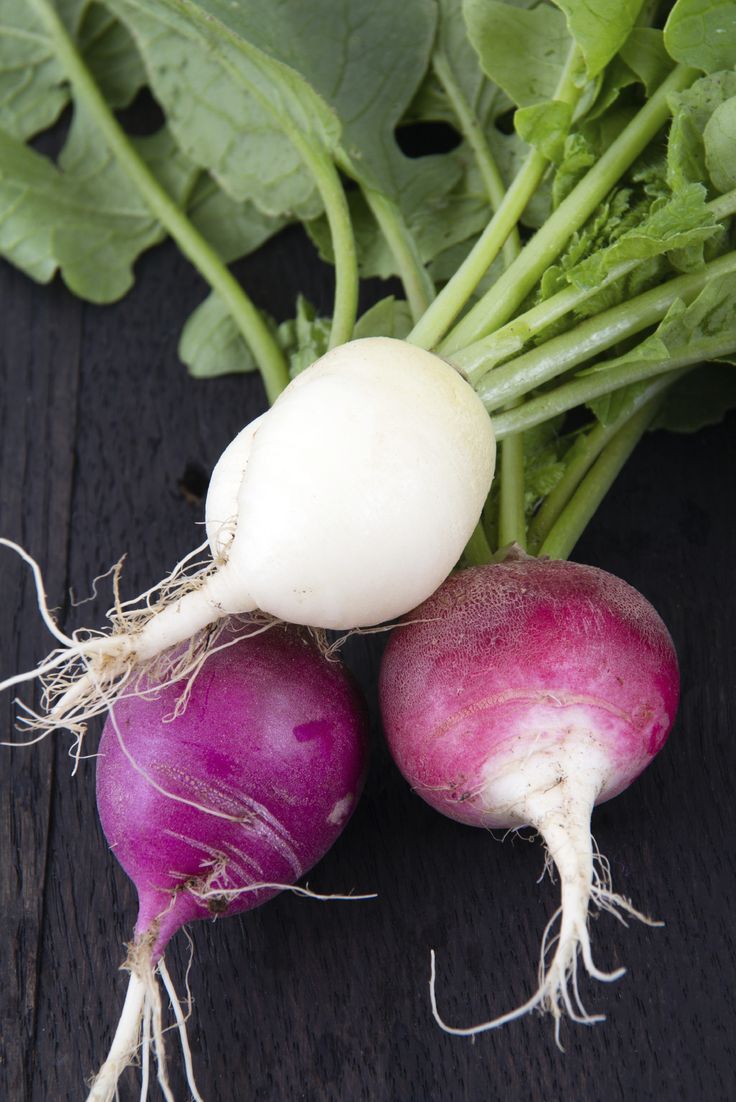
It’s all up to your taste, but you’ll never know which type of radish is your favorite until you try a few, right? Many radish varieties, and many of them differ in their taste, color, and size. It’s good to plant a few so that you’ll know what you like the most and continue with this certain variety. Some of the most popular varieties are Cherry Belle, White Icicle, Sparkler, and White Beauty, to name a few.
2. Check the Soil
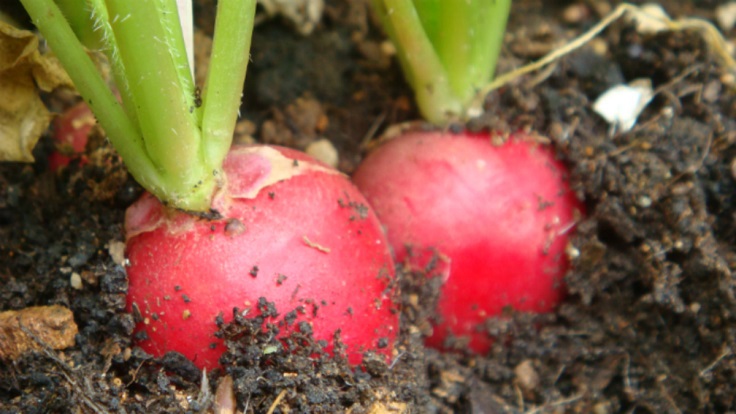
Before you start planting, first, you must make sure that the soil is right for the radishes. Start with removing the rocks, if there are any, and then test the soil to find out the pH content – it should be between 5.8 and 6.8. Next, radishes need well-drained soil too. It will help if you add organic matter before plantings, such as compost or manure.
3. Pick the Right Time
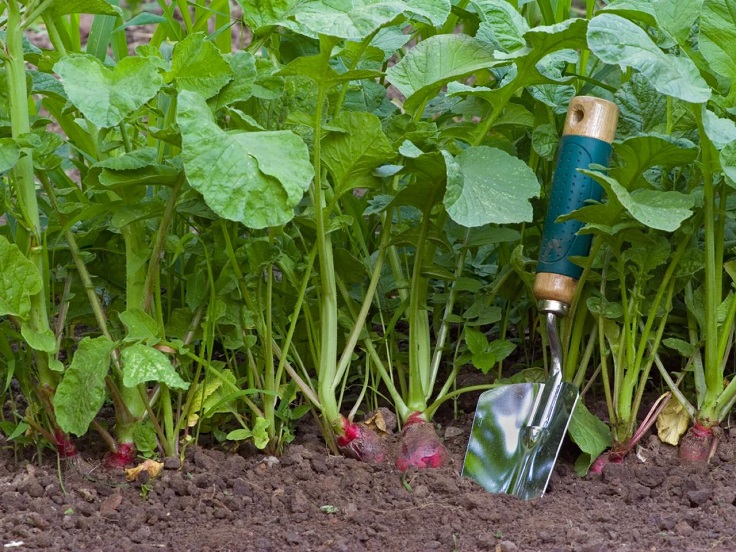
via diynetwork.com
Radish is a cool-weather crop, and because of it, it’s best to plant it during spring or autumn. It’s very likely that if you plant it during hot temperatures, it won’t give you positive results. That’s why, when the weather gets really hot, it’s best to stop growing and continue when the weather gets cooler. Plant your first crop two weeks before the last frost in spring, and don’t worry about the frost – radishes can handle it!
4. Pick the Planting Site
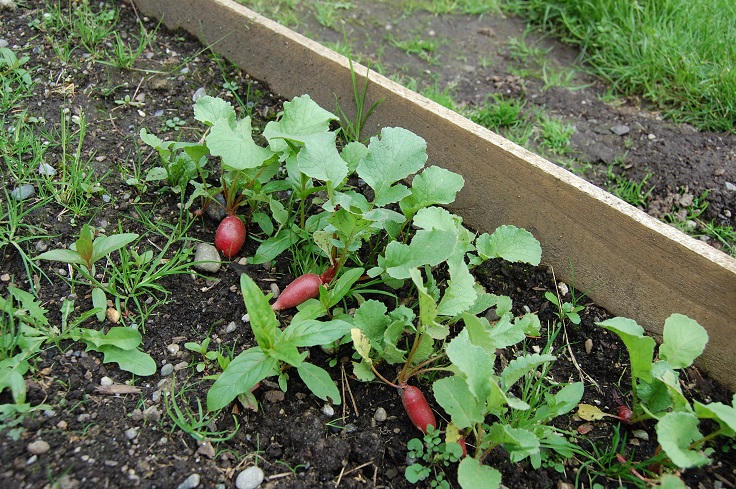
via fenugreeklove.wordpress.com
This should be a place where the radishes would get plenty of suns, as they are very big fans of it! However, it’s good to provide them with partial shade if the sun gets too intense during the day. This can be very tricky because if you leave them in the shade, even if it comes from taller plants around the radishes, they will put their energy into growing bigger leaves, and your crops would be smaller!
5. Use Radish as Companion Plant
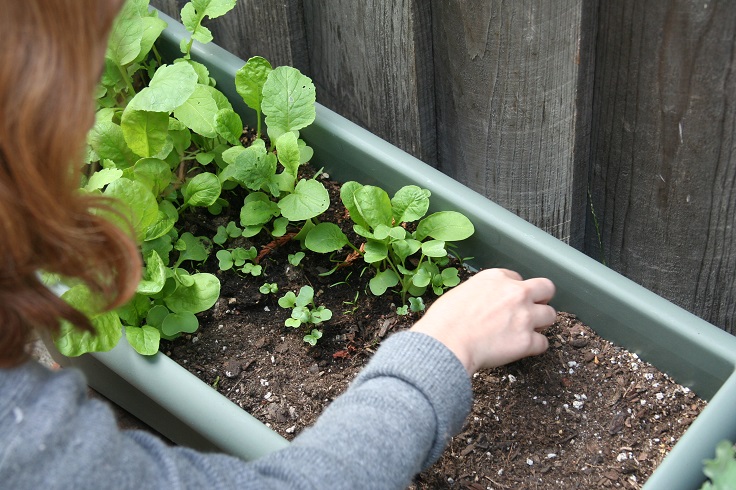
via oaklandliving.wordpress.com
This is more beneficial to the plants around the radish than to the radish itself. We’re talking about the “companion cropping” concept that includes two different plants being planted next to each other so that one of them is chasing away pests from the other. In our case, the radish helps keep many bugs away, and with it, it would also help the other plants grow faster.
6. Water in Moderation
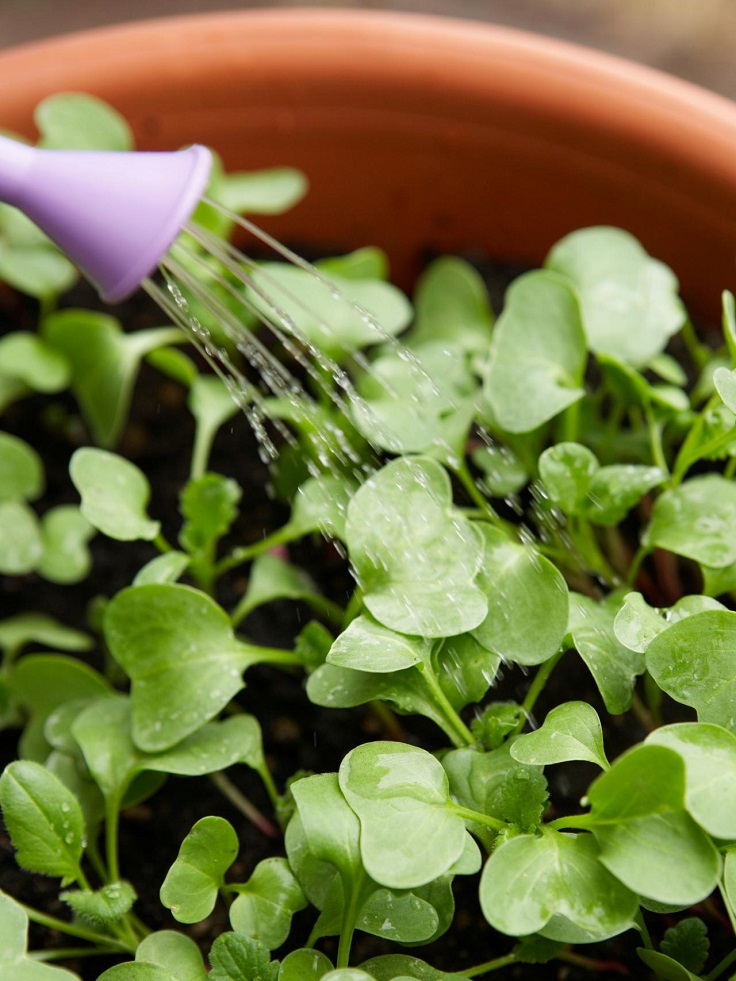
via hgtv.com
Radishes need consistent moisture but without being waterlogged. So, keep the soil moist but not soaked. If you water them frequently, the radishes will grow quickly, which in return would give them a better taste. If you let the radish grow slowly, most likely you won’t like the way they’ll taste later. Make sure to water them evenly as well.
7. Thin Out Seedlings
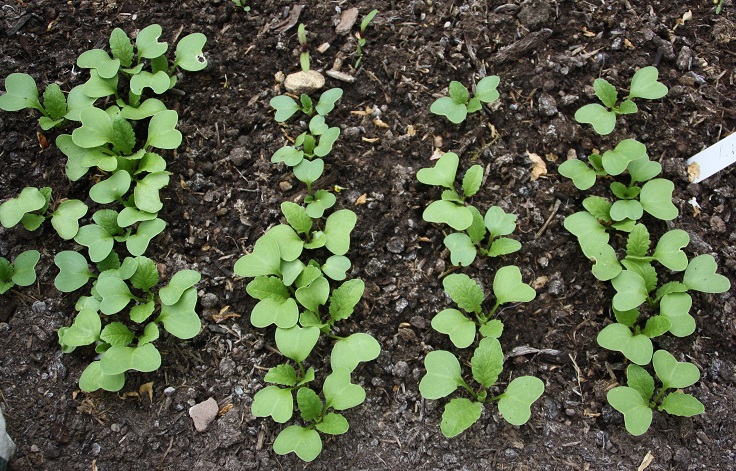
via thewholesomeway.com
It’s important to do this step as the seedlings germinate. You need to thin out the successful seedlings to about 5 cm apart from each other. This way, you are going to make space for the bigger varieties. Cut their heads off all the way down to the soil by using a small pair of scissors.
8. Chase Away Pests
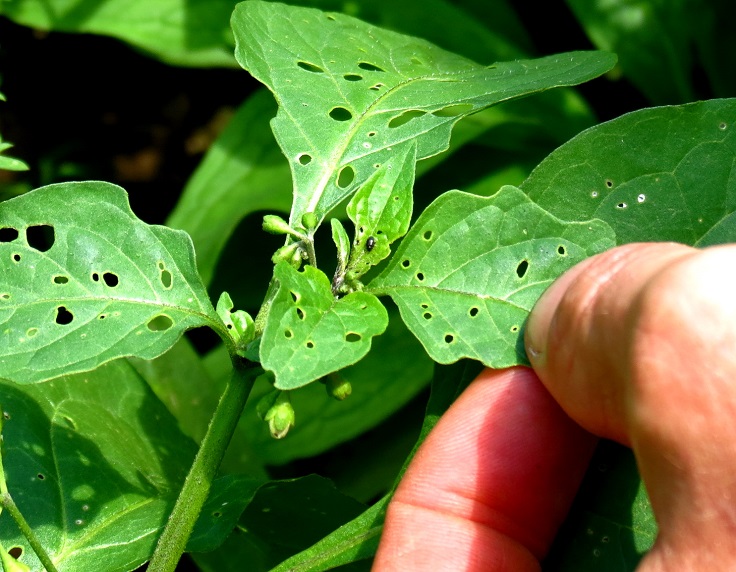
via porchsidegardening.wordpress.com
One of the best ways to prevent bugs from ruining your crops is to keep the garden clear of plant debris and weeds. However, you will see that often this isn’t enough. Every bug requires a different way of handling; for example, if you’re dealing with root maggots, add lime or wood ashes to the base of the radish to get rid of them, or if you’re having troubles with the flea beetle, spread diatomaceous earth that will interrupt the beetle’s life cycle.
9. Prevent Diseases
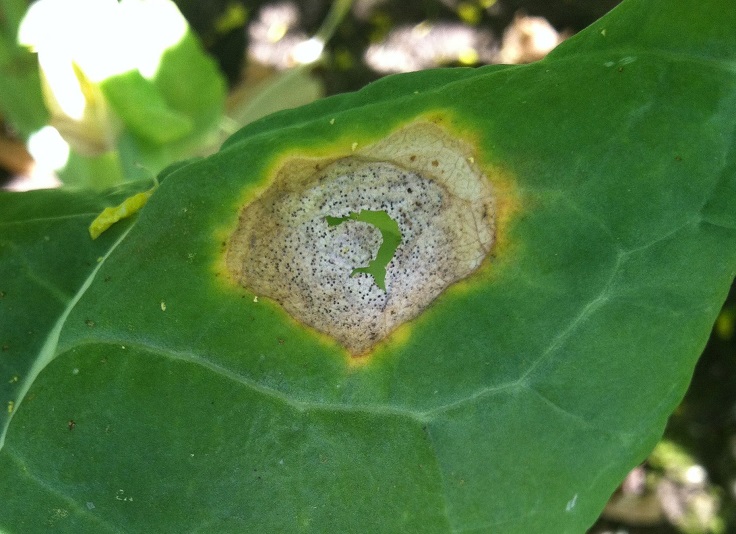
via pnwhandbooks.org
Besides the bugs, you might find yourself dealing with certain diseases that can kill your radish, such as fungal diseases. Septoria leaf spot, downy mildew, and blackleg are just a few of your radish enemies, but you can control the situation as long as you take proper care. Ensure the soil is well-drained, add organic matter to the planting site, rotate the crops, and remove infected radish, to name a number of the things you can do to prevent diseases affecting radish.
10. Easy to Harvest
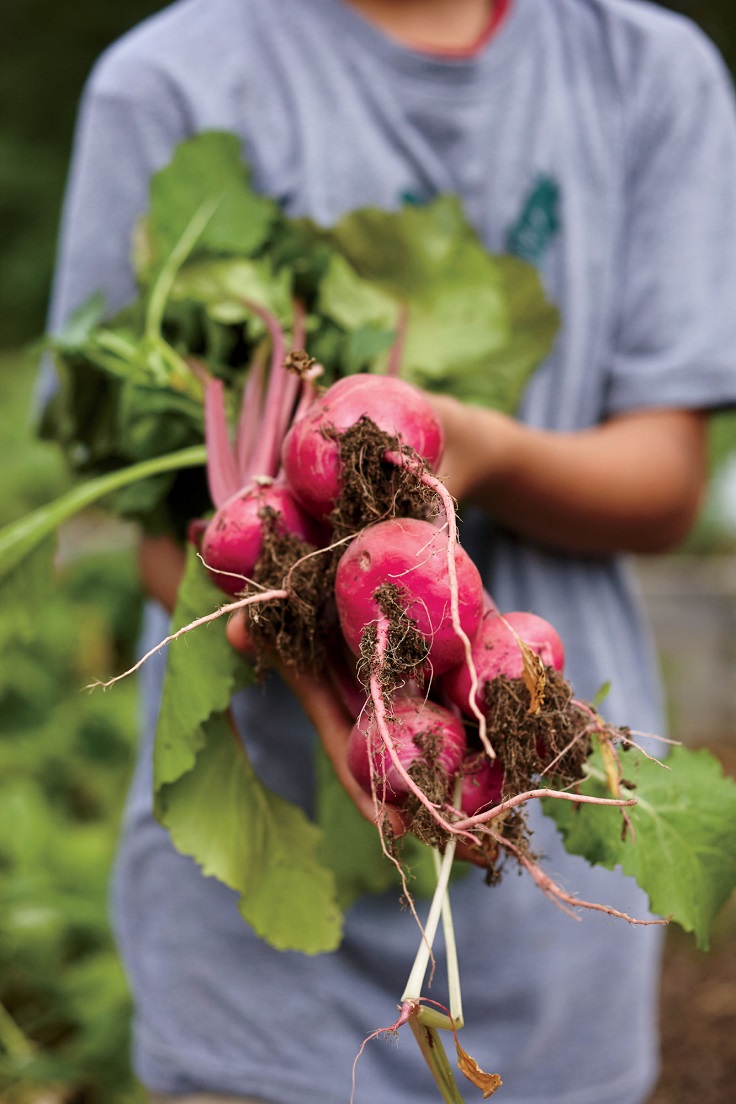
via cookinglight.com
Harvesting radish is the easiest thing to do – you don’t need any tools, just pull the radish out of the soil with your hands, and that’s it. Usually, the radish is ready to harvest when the roots are about 2.5 cm in diameter. You can also push back dirt to see if there is any grown bulb and if there is, you can taste and see if they’re ready for harvest.

